The post Lalique appeared first on Antique Butterflies.
]]>Lalique Butterflies. Lalique is a French glassmaker, founded by renowned glassmaker and jeweller René Lalique in 1888. Lalique is best known for producing glass art, including perfume bottles, vases, and hood ornaments during the early twentieth century. Following the death of René, Lalique transitioned to producing lead glass (crystal) works during the 1950s while under the direction of René’s son, Marc Lalique. Since 2010, Lalique has been owned by Swiss company Art and Fragrance. Reference: Wikipedia
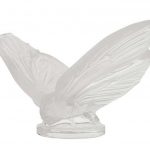
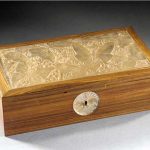
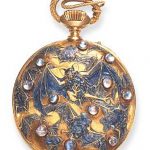
The post Lalique appeared first on Antique Butterflies.
]]>The post Opalescent Glass appeared first on Antique Butterflies.
]]>Opalescent Glass Butterflies. The term “opalescent glass” is commonly used to describe glass where more than one color is present, being fused during the manufacture, as against flashed glass in which two colors may be laminated, or silver stained glass where a solution of silver nitrate is superficially applied, turning red glass to orange and blue glass to green. Some opalescent glass was used by several stained glass studios in England from the 1860s and 1870s onwards, notably Heaton, Butler and Bayne. Its use became increasingly common. Opalescent glass is the basis for the range of glasses created by Tiffany. Reference: Wikipedia
Below are some examples of opalescent glass objects with butterflies as part of their design.
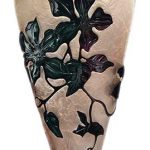
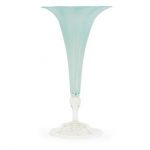
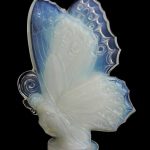
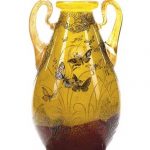
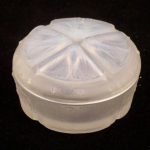
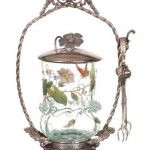
The post Opalescent Glass appeared first on Antique Butterflies.
]]>The post Crystal / Lead Glass appeared first on Antique Butterflies.
]]>Lead glass, commonly called crystal, is a variety of glass in which lead replaces the calcium content of a typical potash glass. Lead glass contains typically 18–40% (by weight) lead(II) oxide (PbO), while modern lead crystal, historically also known as flint glass due to the original silica source, contains a minimum of 24% PbO. Lead glass is desirable owing to its decorative properties.
Originally discovered by Englishman George Ravenscroft in 1674, the technique of adding lead oxide (in quantities of between 10 and 30%) improved the appearance of the glass and made it easier to melt using sea-coal as a furnace fuel. This technique also increased the “working period” making the glass easier to manipulate.
The term lead crystal is, by technicality, not an accurate term to describe lead glass, as being an amorphous solid, glass lacks a crystalline structure. The use of the term lead crystal remains popular for historical and commercial reasons. It is retained from the Venetian word cristallo to describe the rock crystal imitated by Murano glassmakers. This naming convention has been maintained to the present day to describe decorative hollow-ware.
Lead crystal glassware was formerly used to store and serve drinks, but due to the health risks of lead, this has become rare. One alternative material is crystal glass, in which barium oxide, zinc oxide, or potassium oxide are employed instead of lead oxide. Lead-free crystal has a similar refractive index to lead crystal, but it is lighter and it has less dispersive power. Reference: Wikipedia
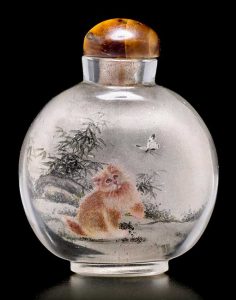
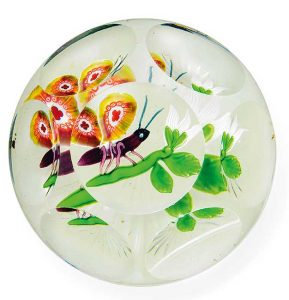
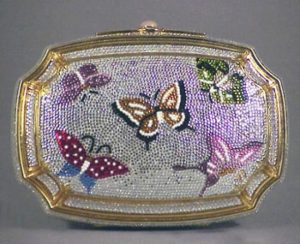
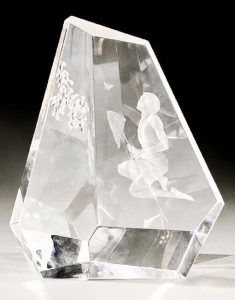
The post Crystal / Lead Glass appeared first on Antique Butterflies.
]]>The post Baccarat Butterflies appeared first on Antique Butterflies.
]]>Baccarat received its first royal commission in 1823. This began a lengthy line of commissions for royalty and heads of state throughout the world. In 1855 Baccarat won its first gold medal at the Worlds Fair in Paris. Baccarat first began marking its work with a registered mark in 1860. The mark was a label affixed to the bottom of the work. In the period 1846-1849 Baccarat signed some of their high quality glass millefiori paperweights with the letter B and the year date in a composite cane. Reference: Wikipedia
Below are some examples of Baccarat glassware with butterflies in their design.
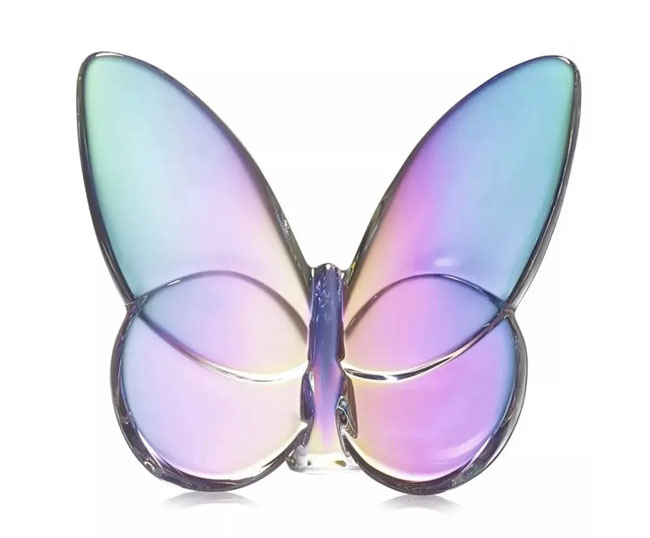
BACCARAT CRYSTAL PAPILLON LUCKY BUTTERFLY IRIDESCENT CLEAR
In original presentation box. Like new.
Sold for US$350 at Louvre Antique Auction in 2023
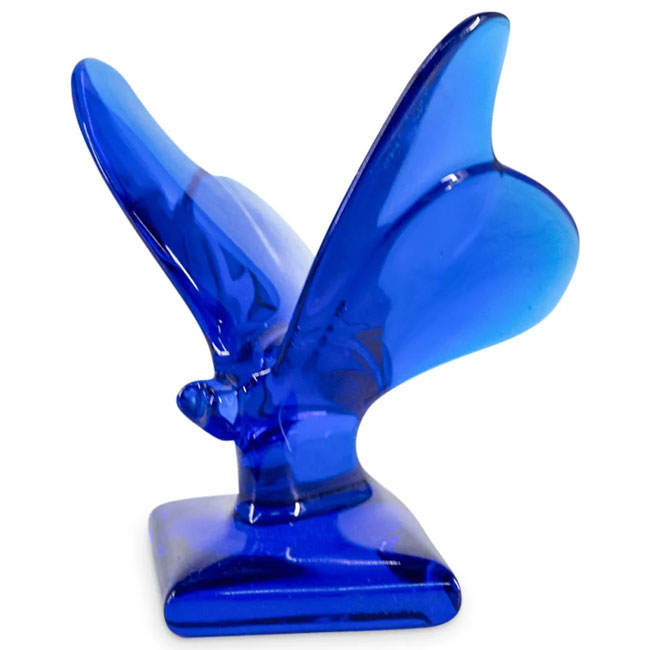
Baccarat crystal “Butterfly” sculpture depicting a cobalt blue butterfly. Marked with Baccarat stamp hallmark on the underside.
CIRCA: 20th Century
ORIGIN: France
DIMENSIONS: H: 3 1/2″
Sold for US$150 at Akiba Galleries in 2023
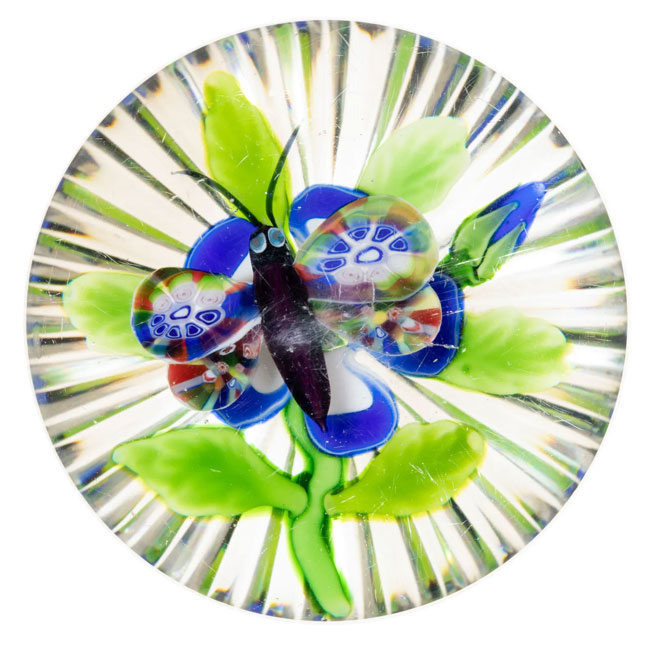
UNIQUE ANTIQUE BACCARAT BUTTERFLY AND WALLFLOWER LAMPWORK ART GLASS PAPERWEIGHT, compound example, amethyst butterfly with a latticed body, black head, and multi-colored millefiori wings above a cobalt blue and white wallflower, four leaves and a bud protruding from the underside, raised on a green stem supporting two additional leaves, prism cuts to the underside. The Compagnie des Verreries et Cristalleries de Baccarat. 1845-1880. 2 1/2″ H, 3 1/8″ D.
Sold for US$3,750 at Jeffrey S. Evans & Associates in 2023
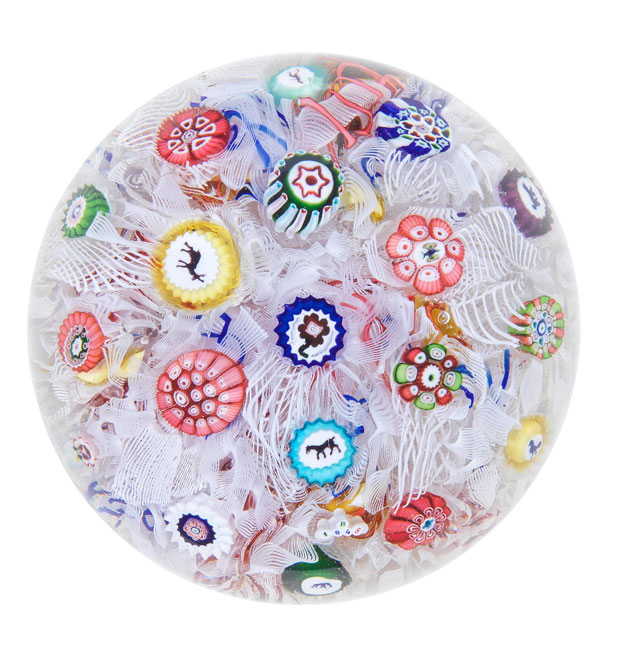
A Baccarat spaced millefiori paperweight, dated 1848
The nineteen brightly coloured canes including Gridel silhouettes of a flower, a horse, a butterfly, a deer, an elephant, a cockerel, a dog, a black monkey, a squirrel and a pigeon, together with the signature cane ‘B 1848’, on a multicoloured upset muslin ground, 7.9cm diam, 5.4cm high
Sold for £768 inc. premium at Bonhams in 2023
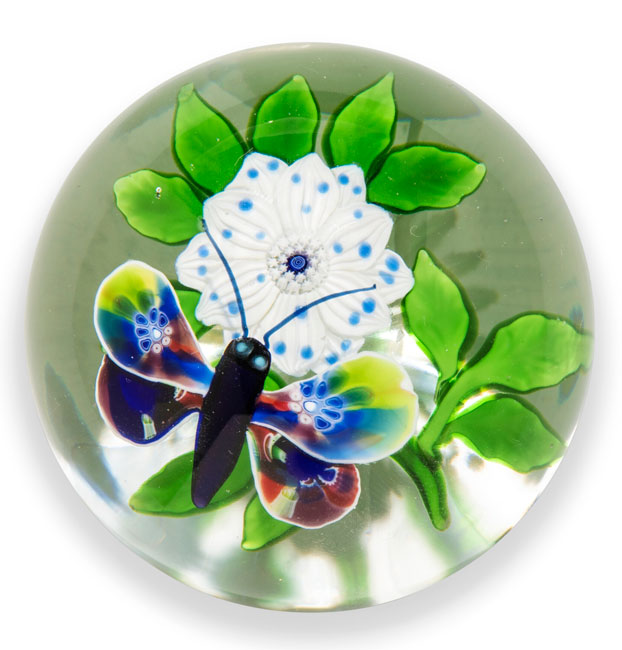
A BACCARAT BUTTERFLY AND FLOWER WEIGHT
MID-19TH CENTURY
The clear glass set with a large white wheatflower with blue spots with numerous green leaves growing from conjoined stalks, the butterfly with multi-coloured marbled wings, deep-purple body and antennae, and pale-turquoise eyes hovering over the flower, star-cut base
2 5/8 in. (6.7 cm.) diameter
Sold for GBP 2,772 at Christie’s in 2023
The post Baccarat Butterflies appeared first on Antique Butterflies.
]]>